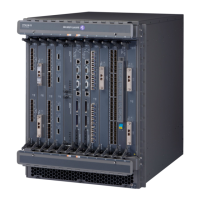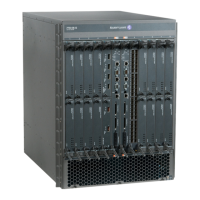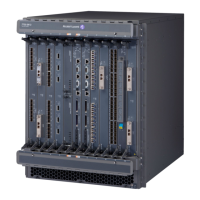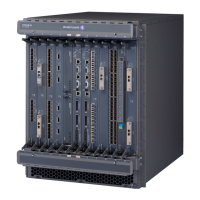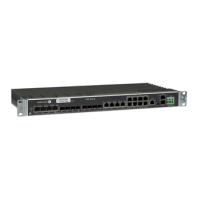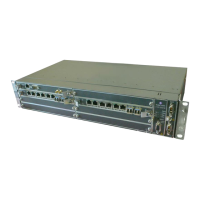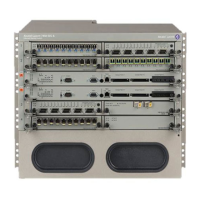System Management
7750 SR OS Basic System Configuration Guide Page 215
Configuration Redundancy
Features configured on the active device CPM are saved on the standby CPM as well. When the
active device CPM fails, these features are brought up on the standby device CPM that takes over
the mastership.
Even with modern modular and stable software, the failure of route processor hardware or
software can cause the router to reboot or cause other service impacting events. In the best
circumstances, failure leads to the initialization of a redundant route processor, which hosts the
standby software configuration, to become the active processor. The following options are
available.
• Warm standby — The router image and configuration is already loaded on the standby
route processor. However, the standby could still take a few minutes to become effective
since it must first re-initialize connections by bringing up Layer 2 connections and Layer
3 routing protocols and then rebuild routing tables.
• Hot standby — The router image, configuration, and network state is already loaded on
the standby and it receives continual updates from the active route processor and the
swapover is immediate. However, hot standby affects conventional router performance as
more frequent synchronization increases consumption of system resources. Newer
generation service routers, like the 7750 SR-Series routers, address this issue because they
already have extra processing built into the system.
Component Redundancy
7750 SR-Series component redundancy is critical to reduce MTTR for the routing system and
primarily consists of the following router features:
• Dual route processor modules — For a highly available architecture, redundant route
processors (RPs) or Control Processor Modules(CPM) are essential. The route processor
calculates the most efficient route to an Internet destination and communicates the best
path information to peer routers. Rapid information synchronization between the primary
and secondary route processor is crucial to minimize recovery time.
• Dual switch fabric — Failover to the backup switch fabric within a minimum time
interval, preferably with no loss of traffic.
• Redundant line cards — Failover to the backup within a minimum time interval,
preferably with no loss of traffic.
• Redundant power supply — A power module can be removed without impact on traffic.
• Redundant fan — Failure of a fan module without impacting traffic.
• Hot swap — Components in a live system can be replaced or become active without
taking the system down or affecting traffic flow to/from other modules.

